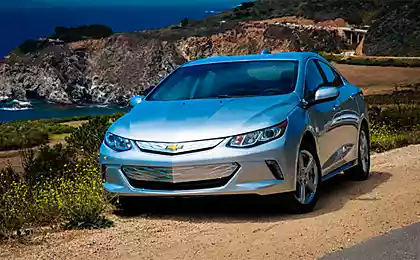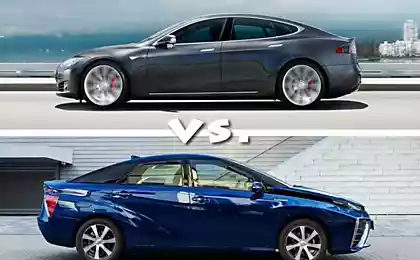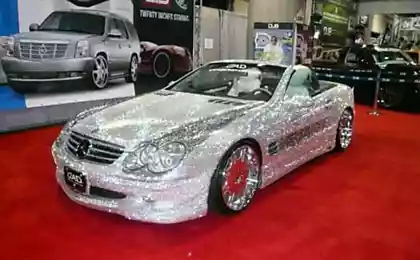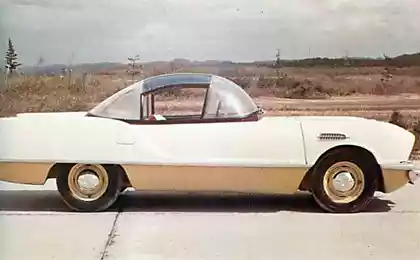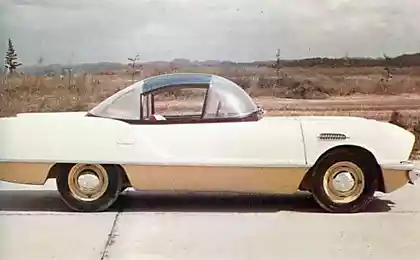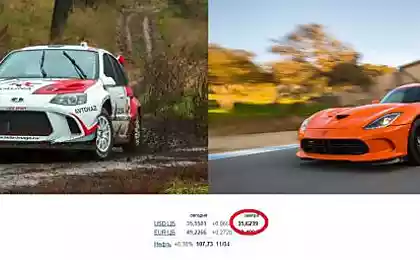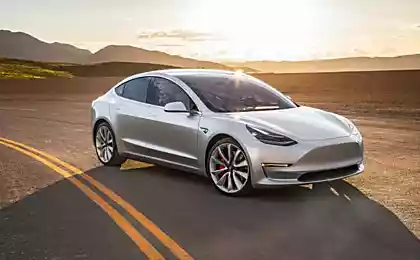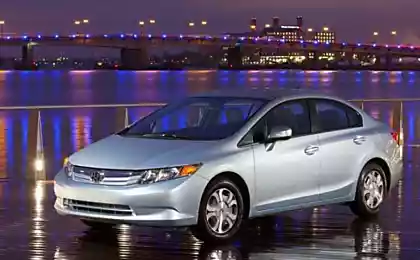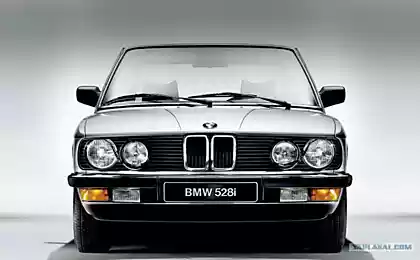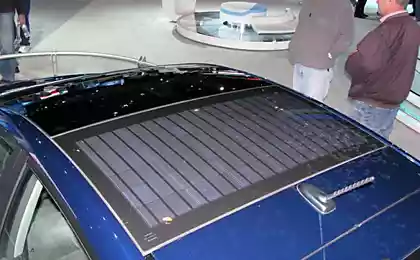471
In the ranking of the most environmentally friendly cars in the lead of the BMW i3, Toyota Prius and Nissan Leaf
Popular German automobile club ADAC (Allgemeiner Deutscher Automobil-Club) was already thirteenth stars out of eco-friendly cars, the first position in which it is projected, occupied vehicle with a fully electric and hybrid propulsion systems.

Only in the test involved 45 cars of different classes with a traditional internal combustion engine and actuators for alternative sources of supply. One of the main objectives of the tests was to find out what manufacturers actually reduce emissions of harmful substances and which just want to fulfill the prescribed norms. The tests were carried out both in the lab and on the roads.
The "greenest" among all the cars were updated urban hatchback BMW i3 (94 Ah), which went on sale this year (we will remind, the main difference from its predecessor is increased to 300 km range (NEDC). Second place was taken by a hybrid Toyota Prius. Also in the top two electric vehicle – Nissan Leaf (30 kWh) and Tesla Model S P90D – they are located on the third and sixth positions, respectively.

A new series of tests is clearly a reaction to the ADAC, deselect: experts autoclub radically rebuilt the test procedure. Recall that the Volkswagen group is embedded in a control program of their engine software, allowing to reduce the emissions during the tests on rollers. Therefore, new methods of tests of ADAC included as a check on the reels, and test on real roads with the use of mobile gas analyzers.

Vehicles with a 200-pound weight felt on the new harmonized WLTC cycle "avtobusnogo" cycle, developed in ADAC. Were evaluated for exhaust emissions: how much carbon monoxide (CO), hydrocarbons (HC), nitrogen oxides (NOx) and soot particles distinguishes this machine. Separately measured the CO2, a major greenhouse gas. In both categories exhibited a score from 0 to 50 points. Toxicity assessment for electric vehicles in any case accounted for the maximum 50 points, while CO2 emissions were considered on the basis of the power consumption and data on the specific carbon dioxide emissions from power plants.
Cars with diesel engines were mostly in the lower half of the list. And of the 26 vehicles with a diesel engine who visited the test, half of them never earned a single ecoball because of increased emissions of nitrogen oxides. Especially this parameter has different Renault cars: in particular, the Captur crossover dCi 90 threw 460 mg/km NOx, 5.5 times higher than the level at certification. On the other hand, the current test has shown that to give up on diesels too early: in the top 10 were Mercedes-Benz E 220 d and the BMW 118d. And if the first equipped with a catalyst with injection of urea (AdBlue), "unity" turned out to be quite eco-friendly and without such a system.
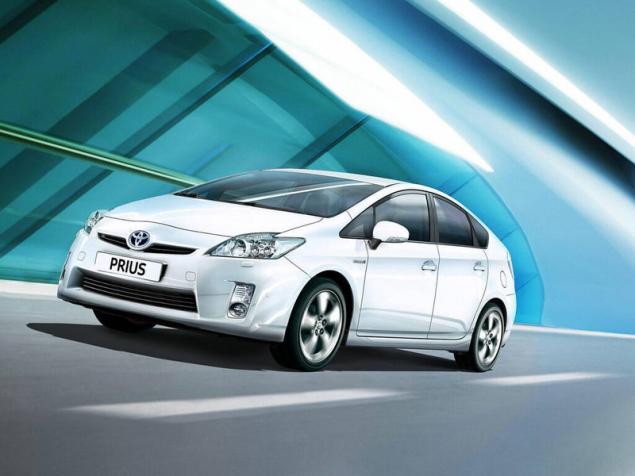
ADAC experts found elevated levels of particulate emissions from petrol cars Volkswagen Tiguan 1.4 TSI and Opel Corsa 1.0 DI Turbo, which is partly understandable for motors with direct injection. Opel also showed elevated NOx emissions. A most surprising and unpleasant discovery became prohibitive soot emissions from a gasoline Smart. Despite the traditional system of distributed injection, particulate emissions were the highest among petrol cars — is twice higher than the Opel, is much higher than the hybrid Toyota Prius. ADAC experts have suggested that this is due to a very stressful thermal conditions of the motor are in the back.
Finally, the discovery was that the hybrid powertrain does not guarantee clean exhaust. So, hybrids Hyundai Ioniq and Kia Niro has earned only three stars, finishing in 13th and 14th places behind a number of models with petrol and even diesel engines. The main reason for the lag is the relatively high concentration in the emissions of carbon monoxide and harmful particles. published
Source: ecotechnica.com.ua/transport/1839-v-rejtinge-samykh-ekologichnykh-mashin-lidiruyut-bmw-i3-toyota-prius-i-nissan-leaf.html

Only in the test involved 45 cars of different classes with a traditional internal combustion engine and actuators for alternative sources of supply. One of the main objectives of the tests was to find out what manufacturers actually reduce emissions of harmful substances and which just want to fulfill the prescribed norms. The tests were carried out both in the lab and on the roads.
The "greenest" among all the cars were updated urban hatchback BMW i3 (94 Ah), which went on sale this year (we will remind, the main difference from its predecessor is increased to 300 km range (NEDC). Second place was taken by a hybrid Toyota Prius. Also in the top two electric vehicle – Nissan Leaf (30 kWh) and Tesla Model S P90D – they are located on the third and sixth positions, respectively.

A new series of tests is clearly a reaction to the ADAC, deselect: experts autoclub radically rebuilt the test procedure. Recall that the Volkswagen group is embedded in a control program of their engine software, allowing to reduce the emissions during the tests on rollers. Therefore, new methods of tests of ADAC included as a check on the reels, and test on real roads with the use of mobile gas analyzers.

Vehicles with a 200-pound weight felt on the new harmonized WLTC cycle "avtobusnogo" cycle, developed in ADAC. Were evaluated for exhaust emissions: how much carbon monoxide (CO), hydrocarbons (HC), nitrogen oxides (NOx) and soot particles distinguishes this machine. Separately measured the CO2, a major greenhouse gas. In both categories exhibited a score from 0 to 50 points. Toxicity assessment for electric vehicles in any case accounted for the maximum 50 points, while CO2 emissions were considered on the basis of the power consumption and data on the specific carbon dioxide emissions from power plants.
Cars with diesel engines were mostly in the lower half of the list. And of the 26 vehicles with a diesel engine who visited the test, half of them never earned a single ecoball because of increased emissions of nitrogen oxides. Especially this parameter has different Renault cars: in particular, the Captur crossover dCi 90 threw 460 mg/km NOx, 5.5 times higher than the level at certification. On the other hand, the current test has shown that to give up on diesels too early: in the top 10 were Mercedes-Benz E 220 d and the BMW 118d. And if the first equipped with a catalyst with injection of urea (AdBlue), "unity" turned out to be quite eco-friendly and without such a system.

ADAC experts found elevated levels of particulate emissions from petrol cars Volkswagen Tiguan 1.4 TSI and Opel Corsa 1.0 DI Turbo, which is partly understandable for motors with direct injection. Opel also showed elevated NOx emissions. A most surprising and unpleasant discovery became prohibitive soot emissions from a gasoline Smart. Despite the traditional system of distributed injection, particulate emissions were the highest among petrol cars — is twice higher than the Opel, is much higher than the hybrid Toyota Prius. ADAC experts have suggested that this is due to a very stressful thermal conditions of the motor are in the back.
Finally, the discovery was that the hybrid powertrain does not guarantee clean exhaust. So, hybrids Hyundai Ioniq and Kia Niro has earned only three stars, finishing in 13th and 14th places behind a number of models with petrol and even diesel engines. The main reason for the lag is the relatively high concentration in the emissions of carbon monoxide and harmful particles. published
Source: ecotechnica.com.ua/transport/1839-v-rejtinge-samykh-ekologichnykh-mashin-lidiruyut-bmw-i3-toyota-prius-i-nissan-leaf.html
The healing properties of carrots: application of primary varicose veins and not only
The first in the U.S. marine wind power


